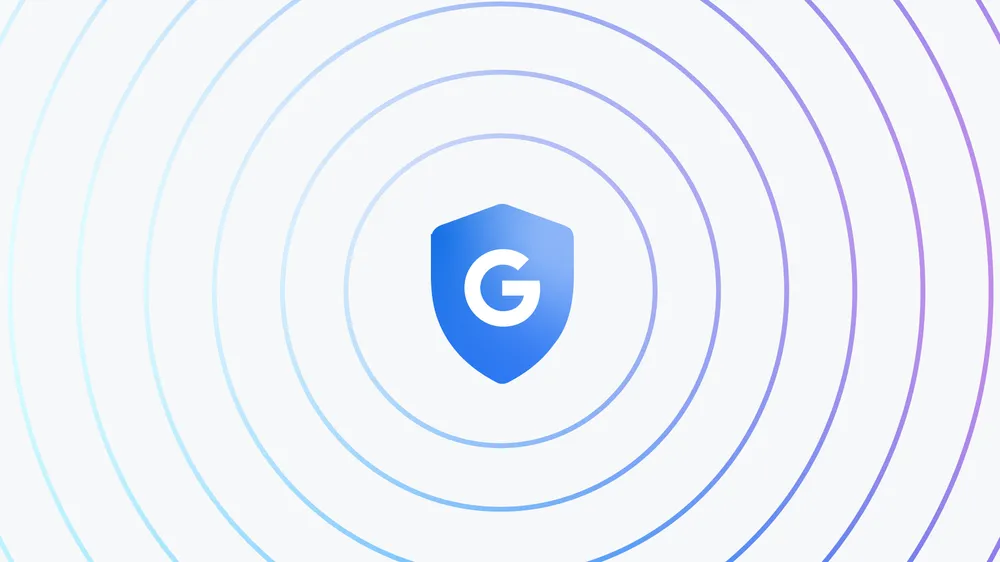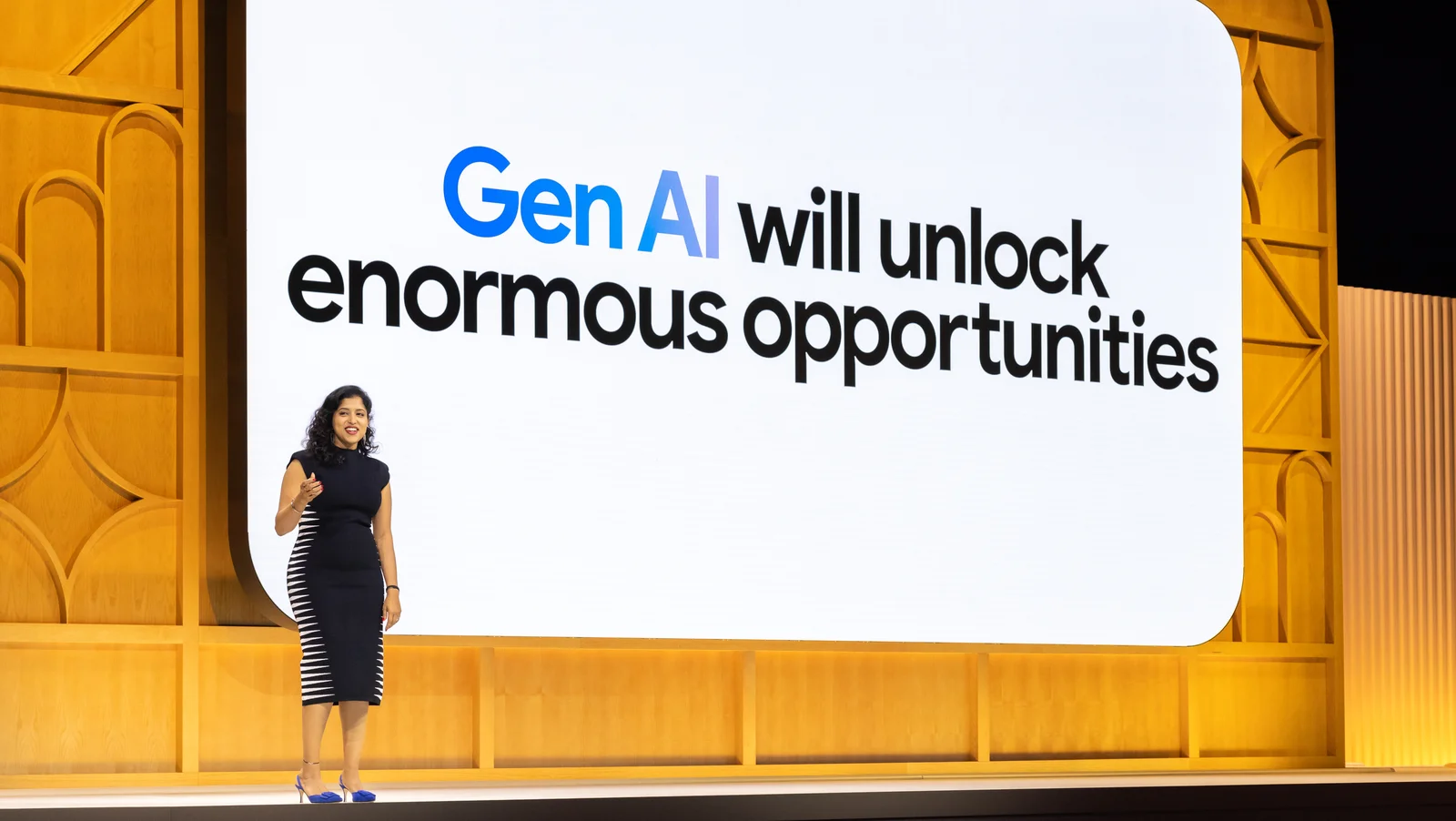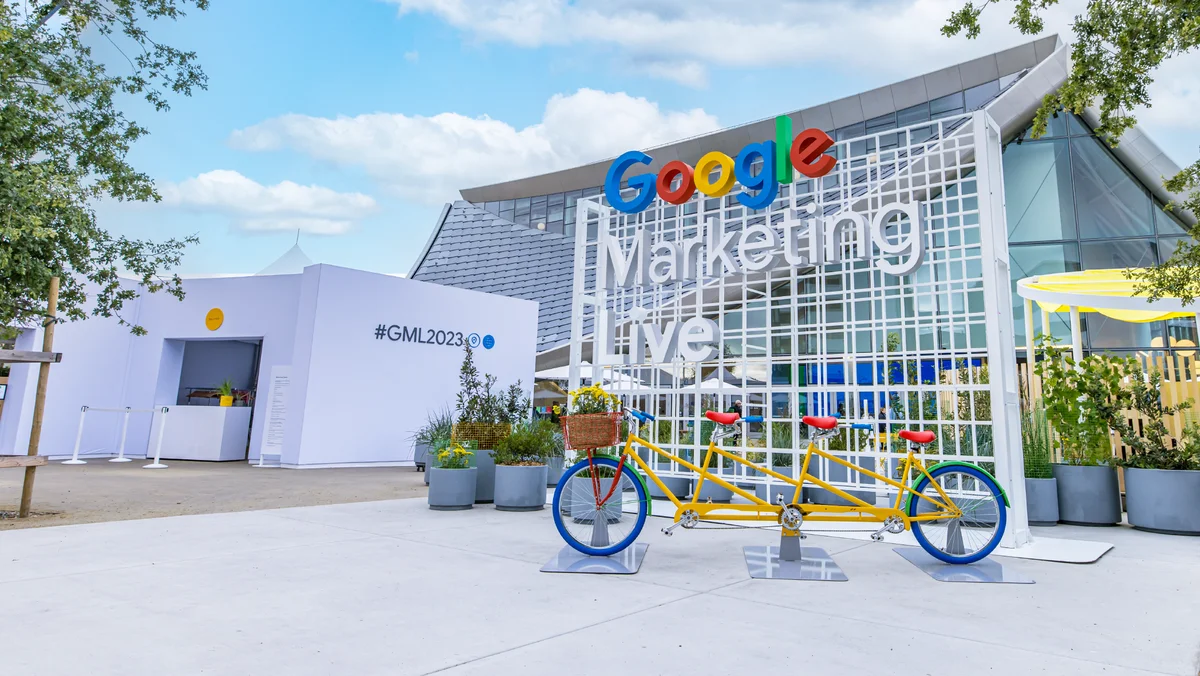Comment nos plateformes d’achat d’espace publicitaire veillent au partage des revenus avec les éditeurs
Editor's note: This blog post was originally published on The Keyword.
In this post, we explain how Google's advertising activities work when advertisers and publishers choose to use our buying and selling services. In a separate post, we're also looking at how major news publishers are leveraging their content using Google Ad Manager.
Over the years, we have continued to invest in our advertising technologies to offer products that make it easier for publishers and advertisers to buy and sell graphic advertising online. Our products have helped grow the digital advertising market and keep the Internet open and free for everyone.
In the advertising technology sector, thousands of companies are collaborating to deliver digital advertising on the web. Here is an overview of how graphic advertising works and the daily flow of ads between buyers and sellers.
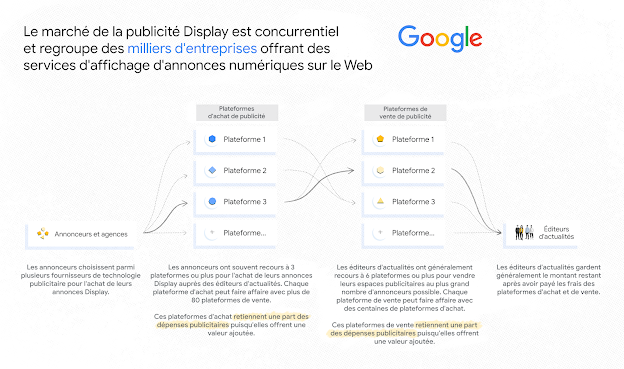
Recently, some have estimated that digital technology providers retain up to half of the revenue from graphic advertising. We can't speak for other companies in the industry , but as far as Google is concerned, that's not the case.
Even when our sales and purchasing services are in peak periods, publishers receive the largest share of revenues. In fact, when marketers used Google Ads or Display & Video 360 in 2019 to buy display ads in Google Ad Manager, publishers retained more than 69 percent of the revenue generated. And when publishers used the Ad Manager platform to sell advertising directly to advertisers, they kept an even bigger share of the revenue.
Most of the revenue from our graphic advertising products is used to cover the costs of operating a complex, ever-changing business. Among other things, these revenues help build and maintain cutting-edge data centers, invest in cutting-edge computer research to target the most useful and relevant ads, and introduce innovations that increase publishers' revenues, provide advertisers with a maximum return on invested capital and maintain free and free internet access.
To illustrate how our ad technology solutions work, here are two of the most common ways advertisers use to buy ads through our services.
Display Ads Purchased Using Google Ads
Millions of advertisers (including many small and emerging businesses) use Google Ads every day to buy ads on our search engines, YouTube ads, and display ads on sites and non-Google apps. They use this platform because it makes the process of buying digital advertising simpler and more efficient. The vast majority of advertisers who purchase display advertising using Google Ads pay Google only when a user performs an action after seeing their ad (eg, when they click on the ad, fill out a form, or make a purchase). However, Google still pays publishers for the advertising space they sell through Ad Manager.To facilitate this dynamic, our technology evaluates each impression and converts advertisers' business objectives into cost-per-mile auctions for the purchase of publisher's advertising inventory. By taking the risk of showing ads to users, regardless of whether they take the action desired by the advertiser, Google Ads provides buyers and sellers with effective and appropriate ways to pay and earn income.
In 2019, publishers who used Ad Manager retained more than 69 percent of the total amount advertisers paid to purchase their ad inventory using Google Ads. With Google Ads, there are no fixed charges per impression, since the platform does not charge advertisers for most impressions. Rather, Google's revenue share varies over time based on a variety of factors, such as advertiser goals, the types of display ads advertisers choose to serve, and user feedback.
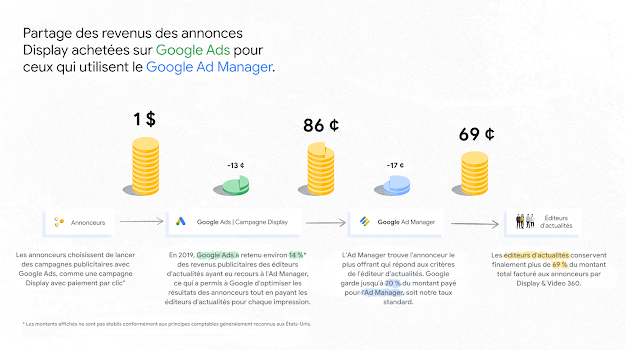
Display Ads Purchased Using Display & Video 360
Google also helps big brands and their agencies execute complex graphic advertising strategies and campaigns. These advertisers often use our Display & Video 360 business software to reach global customers.
Most advertisers who choose this platform buy digital ads in different formats and across a large number of assets (far more than the publisher’s websites and apps that use Ad Manager). Thanks to Display & Video 360, these advertisers can buy advertisements from more than 80 publishers or sales platforms (AT&T, Comcast, Index Exchange, OpenX, Rubicon Project, MoPub, etc.). Our standard rate for advertisers who use Display & Video 360 to purchase display ads is 15 percent.
Many publishers choose multiple platforms to sell their programmatic advertising inventory to advertisers. When an advertiser uses Display & Video 360 to purchase advertising inventory from a publisher who uses Ad Manager, the publisher retains more than 69 percent of the total amount paid by the advertiser.
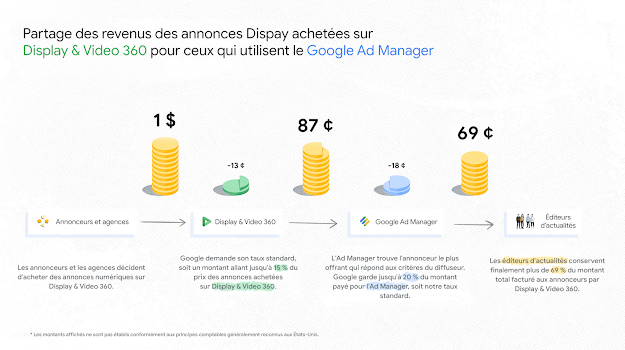
We invest in our systems to keep the Web open to everyone
We ignore the rates in effect in other companies in our sector, but we want to make ours public in order to make our advertising management activities transparent. By helping businesses, large and small, to reach their customers, we can help publishers finance their online content and contribute to the sustainability of web advertising revenues worldwide.
* The figures included in this post show the fees charged by Google and not those paid to other platforms and services. Amounts are not established in accordance with generally accepted accounting principles in effect in the United States.
Please view the original post at http://canada-fr.googleblog.com/2020/07/comment-nos-plateformes-dachat-despace.html

